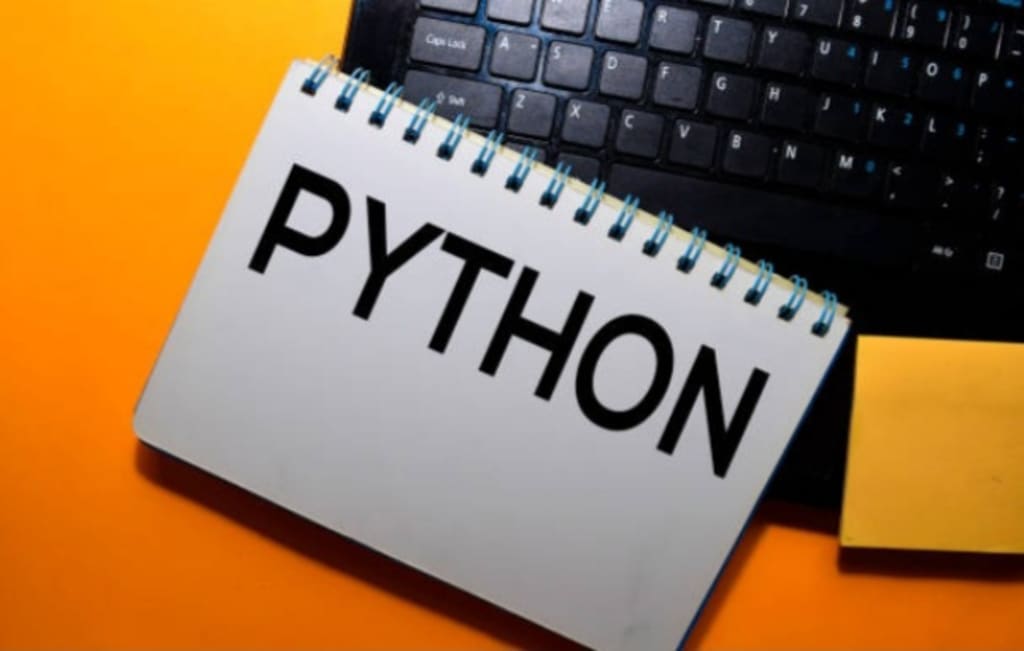Detailed Article on python
Programming

Python is a popular high-level programming language that is used for various purposes such as web development, scientific computing, data analysis, artificial intelligence, and more. It was created by Guido van Rossum in the late 1980s and released for public use in 1991. In this article, we will explore the key features, advantages, and applications of Python.
Features of Python:
Easy to Learn: Python has a simple syntax and easy-to-understand structure that makes it an ideal language for beginners to learn.
Open Source: Python is an open-source language, which means it is free to use, modify, and distribute.
Platform Independent: Python is platform-independent, which means it can run on any platform or operating system.
Large Standard Library: Python comes with a large standard library that provides support for various programming tasks, such as string processing, web services, and more.
Object-Oriented: Python supports object-oriented programming, which allows users to create reusable code and reduce development time.
High-level Language: Python is a high-level language, which means it abstracts away low-level details and focuses on the logic of the code.
Advantages of Python:
Easy to Read and Write: Python code is easy to read and write, which makes it easy to maintain and debug.
Extensive Library Support: Python has a large standard library as well as numerous third-party libraries that provide support for various programming tasks such as web development, data analysis, and more.
Versatile: Python is a versatile language that can be used for a wide range of applications, such as web development, data analysis, scientific computing, and artificial intelligence.
Rapid Development: Python's simple syntax and large library support make it an ideal language for rapid development and prototyping.
Cross-platform Compatibility: Python is a cross-platform language, which means it can run on any operating system or platform, including Windows, Linux, and Mac OS.
Applications of Python:
Web Development: Python is used for web development because of its powerful web frameworks, such as Django and Flask. These frameworks provide developers with an easy-to-use structure for building web applications.
Data Science: Python is used extensively in data science for data analysis, data visualization, and machine learning. Popular data science libraries in Python include Pandas, Numpy, and Matplotlib.
Artificial Intelligence and Machine Learning: Python is widely used in artificial intelligence and machine learning due to its extensive library support and simplicity. Popular machine learning libraries in Python include Tensorflow and Scikit-learn.
Game Development: Python is used for game development because of its powerful game development libraries, such as Pygame and PyOpenGL.
Desktop Applications: Python is used for developing desktop applications because of its support for GUI frameworks, such as Tkinter and PyQt.
Python Syntax:
Python has a simple syntax that is easy to learn and understand. The following is an example of a simple Python program that prints "Hello, World!" to the console:
python
Copy code
# Simple Python program to print "Hello, World!"
print("Hello, World!")
In this program, the print() function is used to print the string "Hello, World!" to the console. The # symbol is used to indicate a comment in the code.
Python Variables:
Variables are used to store data in Python. In Python, variables do not need to be declared before use, and their data type is determined automatically based on the data assigned to them. The following is an example of a simple Python program that uses variables:
makefile
Copy code
# Simple Python program to use variables
x = 10
y = 20
z = x + y
print(z)
In this program, the variables x and yare assigned the values of 10 and 20 respectively, and then added together to obtain the sum of 30. The result is stored in the variablez, which is then printed to the console using the print()` function.
Python Data Types:
Python supports several data types, including integers, floats, booleans, strings, and lists. The following is an example of a simple Python program that demonstrates the use of these data types:
python
Copy code
# Simple Python program to use data types
# Integer
x = 10
# Float
y = 3.14
# Boolean
z = True
# String
name = "John"
# List
fruits = ["apple", "banana", "cherry"]
print(x)
print(y)
print(z)
print(name)
print(fruits)
In this program, an integer (x), a float (y), a boolean (z), a string (name), and a list (fruits) are declared and initialized with values. The print() function is used to display the values of these variables.
Python Control Structures:
Python provides several control structures, including if-else statements, for loops, while loops, and switch-case statements. The following is an example of a simple Python program that uses control structures:
python
Copy code
# Simple Python program to use control structures
# If-else statement
x = 10
if x > 5:
print("x is greater than 5")
else:
print("x is less than or equal to 5")
# For loop
fruits = ["apple", "banana", "cherry"]
for fruit in fruits:
print(fruit)
# While loop
i = 1
while i <= 5:
print(i)
i += 1
In this program, an if-else statement is used to check if the variable x is greater than 5. If it is, the string "x is greater than 5" is printed to the console, otherwise, the string "x is less than or equal to 5" is printed. A for loop is used to iterate through a list of fruits and print each fruit to the console. A while loop is used to print the numbers 1 through 5 to the console.
Conclusion:
Python is a powerful and versatile programming language that is used in a wide range of applications. It is easy to learn, easy to read and write, and has a large standard library and numerous third-party libraries that provide support for various programming tasks. Python's popularity is due in part to its simplicity and versatility, making it an ideal language for both beginners and experienced programmers alike.





Comments
There are no comments for this story
Be the first to respond and start the conversation.